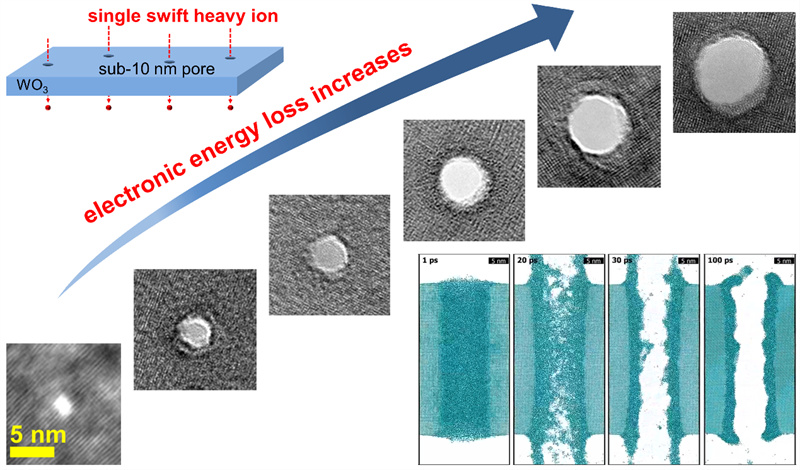| Jun 21, 2023 |
Nanopore fabrication with swift heavy ions
(Nanowerk News) Scientists from the Institute of Modern Physics (IMP) of the Chinese Academy of Sciences (CAS), in collaboration with the Joint Institute for Nuclear Research, Russia, have recently introduced a novel method for fabricating nanopores smaller than 10 nm in WO3 nanosheets. This pioneering research has been published in the scientific journal, Nano Letters ("Direct Fabrication of Sub-10 nm Nanopores in WO3 Nanosheets Using Single Swift Heavy Ions").
|
|
Nanopores play an essential role in single molecule detection, nanofluidic devices, and nanofiltration membranes. Traditional methods to fabricate these minute pores in inorganic films like SiN, SiO2, and Al2O3 employ focused ion or electron beams. However, these conventional methods are time-consuming and complicated, requiring a feedback system or direct imaging. Each nanopore is produced individually, posing a barrier to mass production.
|
 |
| The sub-10 nm nanopores in the WO3 nanosheets created using single swift heavy ions. (Image: XU Lijun and ZHAI Pengfei)
|
|
The team at the IMP set out to overcome these limitations by exploring an innovative approach that could manufacture size and density-controlled nanopores without the need for any feedback system. They used the Heavy Ion Research Facility in Lanzhou (HIRFL) to demonstrate a direct nanopore fabrication method in WO3 nanosheets using swift heavy ions irradiation.
|
|
To comprehend the underlying mechanism, the researchers implemented molecular dynamics simulations. They discovered that the transient molten phase's viscosity and surface tension, induced by the swift heavy ions, are pivotal in nanopore formation.
|
|
By choosing ions with different electronic energy losses, the team succeeded in creating nanopores varying in size from 1.8 to 7.4 nm in WO3 nanosheets. They also demonstrated that nanopore density could be manipulated by applying different ion fluences.
|
|
This innovative method, free from chemical etching, holds promising potential for wider applications. It not only facilitates nanopore fabrication in materials with low viscosity and surface tension using swift heavy ions, but it also provides fresh insights into latent ion track formation in solid materials.
|

